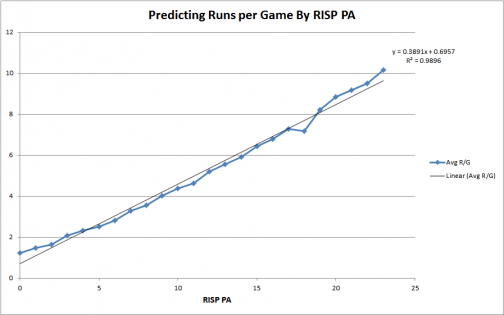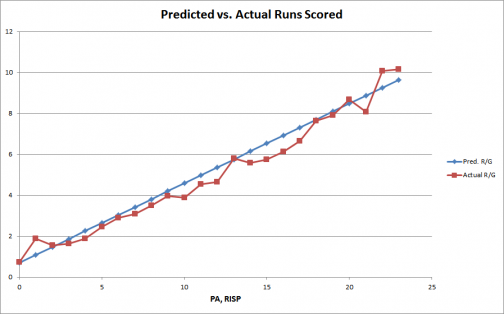Looking at box scores lately, I’ve noticed a number of games in which teams recorded a high number of opportunities with runners in scoring position, but did not score many runs, and did not get many hits in the situation. There often is bias in noticing a trend like that. You see the poor results but don’t notice the normal results. I wanted to see if teams were really under-performing with men in scoring position.
For the previous four seasons, I built a model of runs scored based on the number of plate appearances with runners in scoring position (RISP PA). The following graph shows the relationship between RISP PA and runs per game for the seasons 2007-2010 (click for a larger version).
As you can see, the relationship is linear, with a RISP PA being worth just under 0.4 runs per game. For 2011, used the regression equation to predict runs and compared that to the actual runs per game scored in the season:
As you can see, when RISP PA is under 10, the model does a decent job of predicting average runs per game. Once RISP PA reaches ten, however, teams are under-performing the predictions. So the anecdotal trend appears to be confirmed by the data.
One cause might be bad luck, but another might be lineup depth. There are a number of teams with poor bottoms of the order. So if the better players up top get on base and into scoring position, they may see three PA in which they don’t move. That would increase the number of RISP PA without increasing the number of runs.
Update: Cy Morong sends along this link on balanced lineups that is related to the discussion.




Pingback: RISP and Runs » Stathead » Blog Archive